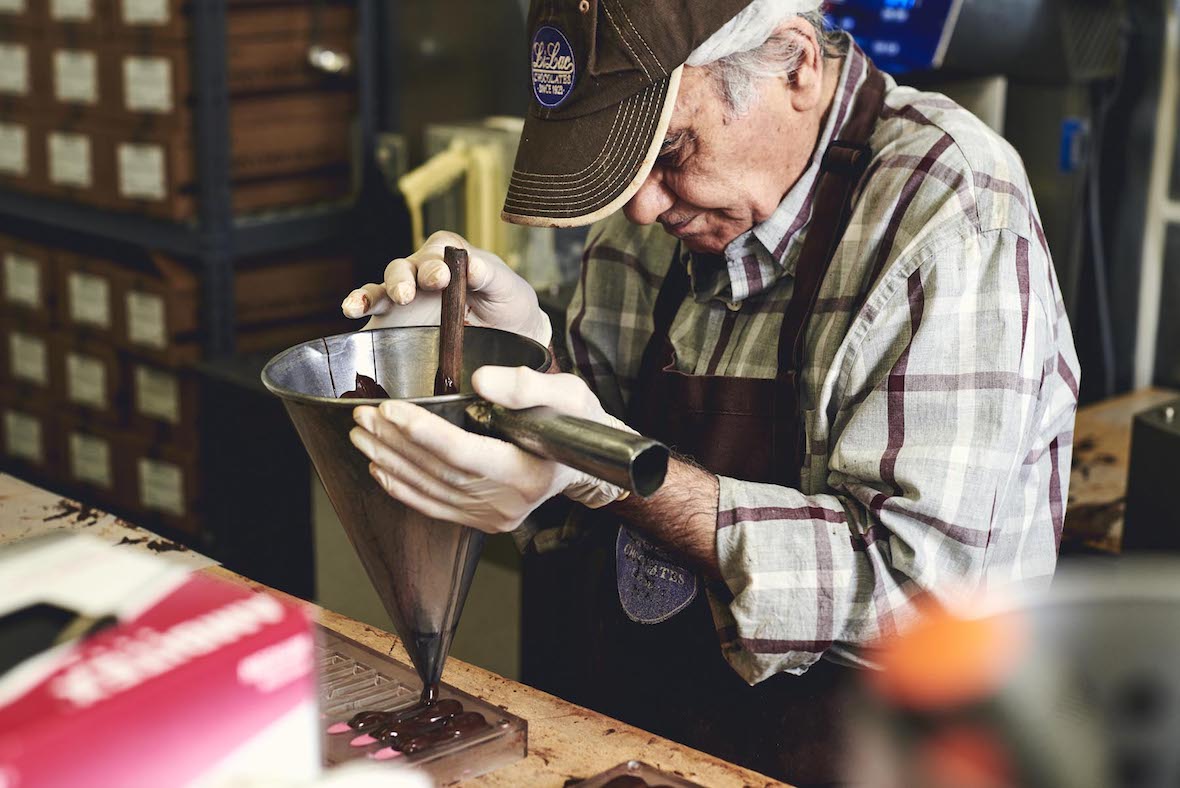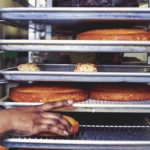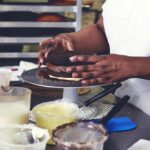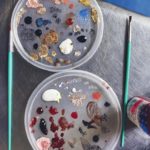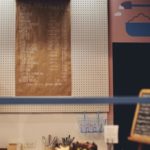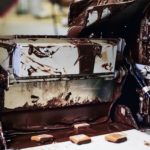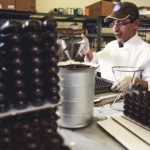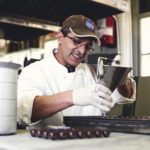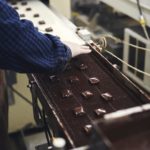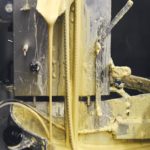
Editor’s note: Visiting Industry City? Browse their event calendar and make a day of it with a visit to the Extraction Lab for coffee or tea, the Food Hall for lunch and Industry City Distillery for a drink with a clear view of the harbor.
Of the six million square feet making up the Industry City campus, 40,000 of them are dedicated to a fully realized Food Hall. That’s almost a football field (sans end zones) of eateries and food purveyors for any taste hunter. Beyond the Food Hall, the other 34 acres host start-ups, design labs, open spaces and even art installations with a common purpose: connecting tenants and supporting their successes.
The venue for our Brooklyn Uncorked (May 31, 2017) and Food Loves Tech (November 3–4, 2017) events, Industry City is proving itself to be a foremost food and drink production hub that provides infrastructure for local businesses’ growth and creativity.
If avocado is your thing, behold the “smashed in NYC” neon sign at the Avocaderia while selecting from a menu of avocado toasts. Plural. For the carnivorous, go by Ends Meat, a whole-animal salumeria featuring classics like pancetta and the rarer ‘nduja (a spreadable pork sausage). I’m attracted to expletives, so a “damn spicy” jar of pickles from Brooklyn Brine was an easy choice. Dairy to cool the fire? Skip on hardwoods to Blue Marble for a single scoop (note that the tip jar features Lionel Richie).
Outside on elevated sidewalks, passersby get a chance to actually see inside the production spaces.
Anthony Cirone, co-owner of Li-Lac Chocolates, moved production to Industry City in 2014 and praised the space’s design as a plus to working in the Sunset Park ecosystem: “People want to know not only what is in their food but how it’s made.” Outside one gets an on-the-ground view of the how from multiple vantage points. From Innovation Alley, I saw employees’ hands place carefully sourced ingredients onto the belts of the enrober. Chocolate mousse squares moved down the line, passing through more chocolate, a cooling belt and a shaker before being removed. All done by hand and gesturing toward the first chocolates that were made in 1923 on Christopher Street.
Industry City has transformed what was behind the scenes for Li-Lac Chocolates’ history “into the forefront for people,” said Cirone, “and people are enthralled by the process, by the tools that are used, the small batches, the marble countertops.”
Donning a hairnet, I went onto the production floor where employees cut dough, filled molds and packaged the sweets. At one station, master chocolatier Anwar Khoder worked with a funnel of ganache. Precision and meticulousness found their match at the molding station where two gents made chocolate lipsticks. The pair made the edible cosmetics by pressing two sheets of half chocolate lipsticks together and then moving them to cool. At the packing station, chocolates get pizzazz before being sold individually and with others in gift boxes, depending on the season.
Quality control? Every employee has their favorites to sample. For Cirone it’s almond bark.
Beyond the aesthetics of Industry City, the sizes of the production zones have allowed for small businesses to increase their footprints and expand into bigger markets. Including the chocolate counter at Industry City, Li-Lac Chocolates now has five locations in Brooklyn and Manhattan and their Internet business gets traffic from around the globe.

Across the street on the Industry City campus, One Girl Cookies has added a café and similarly increased its production for a wholesale business. Standing among mixers, ovens and bags of flour, owner Dawn Casale narrated the bakers’ movements on sight (T Swift’s “Wildest Dreams” played in the background while I swayed): “April is finishing off some muffins over there, Bruni is mixing over there, Freddie is putting the extruder back together and they’re working on some buttercream decorating.”
The afternoon tasks focused on wholesale production before the team switched gears to the business’s other pie chart slices. “We also do mail order and events (specialty cakes for instance) and another line of cakes with simpler piping,” said Casale. In view from the café, Emily Sigall carefully added color to a string of cookies that would become an Eric Carle-style Very Hungry Caterpillar on a two-tier cake.
While “Industry” and “City” may bring rows of cubicles and cold robots to mind, it’s actually setting the scene for open doors, warm light and the freedom of space to spotlight culinary histories. One Girl Cookies is a story of family creating food together. At the Dean Street location you’ll see a family tree; in the Dumbo café, a cartographic mural; at Industry City depictions of Casale’s husband, David Crofton, making pies with his aunts and, on Casale’s side, women in her Italian family coming together to make fig cookies. Reflecting the “personality of the space,” the design of the Industry City café is all about “the production of food,” explained Casale.

And these aren’t the only culinary histories they are embracing. Never a single-idea silo, One Girl Cookies monthly collaborates with other Brooklyn businesses to create specialty products, including biscuits and pound cakes. Previous collaborators include Morris Kitchen, Crown Finish Caves, Raaka Chocolate and Van Brunt Stillhouse. In this frame, Industry City is supporting exposure and growth across the entire city’s food scene, not just the campus in Sunset Park.
Leaving the Food Hall football field with a box of chocolates (I chose anything with peanut butter to assist with quality control) and a box of blueberry muffins (plus a famous whoopie pie), I walked to the R train, enjoying Industry City fever and a sugar high. Chocolates and Cookies are only two windows in the city, but the views from inside and out are pretty damn sweet.


